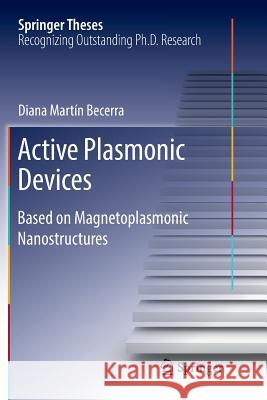Active Plasmonic Devices: Based on Magnetoplasmonic Nanostructures » książka
topmenu
Active Plasmonic Devices: Based on Magnetoplasmonic Nanostructures
ISBN-13: 9783319839363 / Angielski / Miękka / 2018 / 113 str.
Kategorie BISAC:
Wydawca:
Springer
Seria wydawnicza:
Język:
Angielski
ISBN-13:
9783319839363
Rok wydania:
2018
Wydanie:
Softcover Repri
Ilość stron:
113
Waga:
0.20 kg
Wymiary:
23.39 x 15.6 x 0.76
Oprawa:
Miękka
Wolumenów:
01
Dodatkowe informacje:
Wydanie ilustrowane











